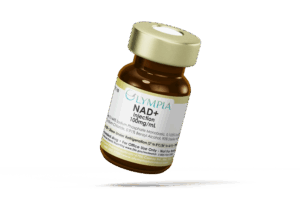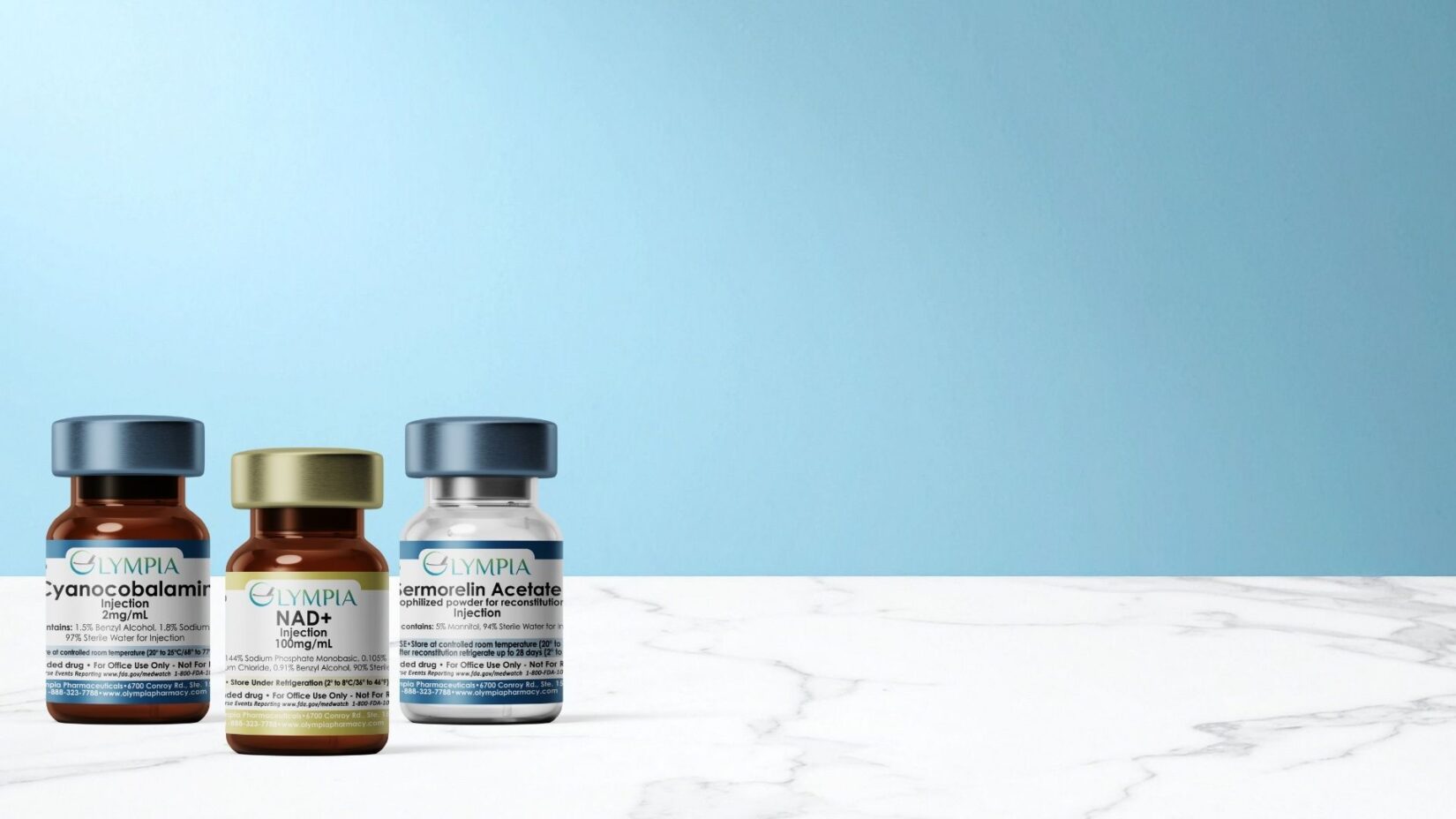Many people who have used a GLP-1 medication already know how to give subcutaneous (SubQ) injections. Once you are comfortable preparing a syringe, rotating sites, and properly disposing of needles, other SubQ vitamins and nutrients can feel less intimidating. This confidence helps patients speak with their clinicians about other health options designed for subcutaneous use, such as vitamin B12 and NAD+.
Subcutaneous injections deliver nutrients into the fatty tissue under the skin. These areas (upper arms, outer-upper thighs, and belly area) have fewer blood vessels than muscle, which allows nutrients to absorb more slowly and consistently over time. This gradual release can be helpful for certain compounded vitamins or coenzymes when prescribed by a clinician.
Vitamin Injections that fit SubQ Routines
Vitamin B12 (such as Cyanocobalamin)
Vitamin B12, when found in the body, supports red blood cell formation, nerve health, and cellular metabolism. The FDA-designated label for cyanocobalamin states that it can be given either intramuscularly or subcutaneously. That flexibility makes B12 one of the most common SubQ options for patients who want to maintain their energy or nutrient routines at home under professional direction.
Olympia offers compounded Vitamin B12 in the form of methylcobalamin, hydroxocobalamin, and cyanocobalamin injections. Your clinician can help you determine which form and route of administration best fit your goals and dosing schedule.
NAD+

Nicotinamide adenine dinucleotide, or NAD+, is a coenzyme involved in hundreds of cellular reactions. It helps the body convert nutrients into energy and supports normal DNA and cellular functions, making it a favorite in Longevity regimens. Olympia’s compounded NAD+ may be administered via IV, IM, or SubQ routes, depending on your care plan. The product, being a liquid solution, is refrigerated, and should be protected from light. Always follow the specific handling directions provided with your prescription.
Together, B12 and NAD+ are the Olympia products most commonly prescribed for SubQ use.
Pyridoxine (Vitamin B6)
Vitamin B6 is a coenzyme for more than 100 enzyme reactions, including amino acid metabolism and neurotransmitter synthesis. Injectable pyridoxine is usually administered IM or IV, though some formularies include SubQ as a possible route. Your prescriber will provide guidance on how it should be used.
Products that Remain IM or IV
Some Olympia formulations are not designed for SubQ injection. Always read the label of your medication prior to beginning a regimen to ensure proper use and absorption.
- MICC: Contains methionine, inositol, choline, and B12. It is listed as an intramuscular (IM) injection only.
- Lipo+, LipoStat+, and LipoStat+ SF: These lipotropic blends are also for IM injection.
- Mineral Blend: Includes magnesium, zinc, manganese, and copper and is intended for IM injection or IV infusion only.
- Magnesium Chloride: Olympia’s magnesium chloride solution is formulated for IV infusion only.
Amino Acids Commonly Included in Olympia Formulations
- L-Arginine may play a role in supporting nitric oxide production and blood vessel relaxation.
- L-Carnitine’s role in the body is to assist with the transport of fatty acids into mitochondria for energy metabolism.
- L-Glutamine helps carry nitrogen between tissues and supports cellular function.
- L-Lysine and l-proline contribute to collagen structure and protein synthesis.
- L-Taurine is found in the heart, brain, and retina and may play a role in nerve and muscle health
These amino acids are typically given through IM or IV routes, and can be found individually or as part of various Olympia blends.
How to Self-Administer a SubQ Injections
This overview is for educational purposes only, and should not replace or substitute guidance from your provider. Always follow your clinician’s specific instructions.
- Gather supplies: medication vial, syringe, alcohol pads, gauze, and a sharps container.
- Wash your hands and check the vial label for the medication name, strength, and expiration date.
- Clean the rubber vial stopper with an alcohol pad and let it dry.
- Draw the prescribed amount into the syringe, then remove air bubbles.
- Select an injection site such as the abdomen, thigh, or upper arm, rotating sites regularly.
- Clean the skin with an alcohol pad and let it dry.
- Pinch the skin to lift a fold of fat, insert the needle at a 45- or 90-degree angle (depending on needle length and tissue thickness), and inject slowly.
- Remove the needle, apply light pressure with gauze, and dispose of the syringe in a sharps container.
Typical SubQ injections doses are small, often around 1 mL or less, unless directed otherwise.
What to Remember from your GLP-1 Experience
- The same injection skills apply to vitamin and coenzyme products designated as SubQ injections.
- Always confirm the route on your vial; do not interchange SubQ, IM, or IV products.
- Ask your clinician before starting any new compounded injection.
Building on your GLP-1 experience can make it easier to include nutrients like B12 and NAD+ in your health plan while staying within your provider’s guidance.
The Olympia Approach
Olympia products are compounded in an FDA-registered facility that adheres to current good manufacturing practices (cGMP). All medications are prepared under pharmacist supervision and provided through licensed clinicians.
If you already feel confident administering GLP-1 injections, discuss with your provider whether a SubQ B12 or NAD+ injection could fit into your personalized wellness plan.
Important: This article is for informational purposes only and not intended nor written to substitute medical advice. Always consult with a medical professional before beginning any form of regimen or care plan.

